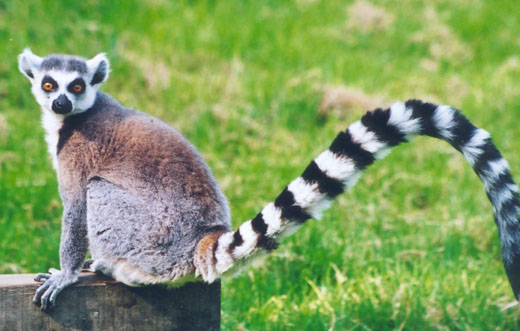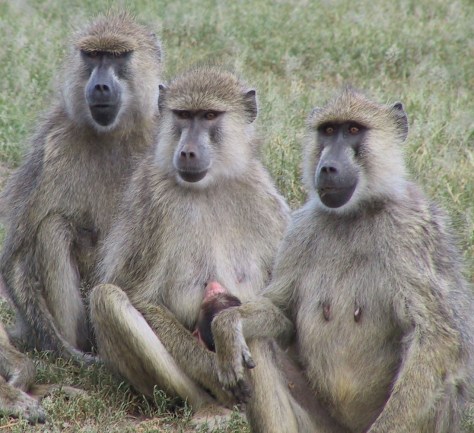Part 1:
You were
asked to engage in a conversation for 15 minutes where you were not allowed to
use any version of a symbolic language (no speaking, writing, or ASL).
·
Did you find this experiment difficult or easy? Explain.
I actually found this assignment to be very difficult. When I read the
instructions of the assignment I thought it was going to be easy peasy. I
thought wrong. I did this assignment with my boyfriend and my little sister. By
the end of the assignment we both realized how important both verbal and nonverbal
communication are.
·
What were the impressions of partners in the conversation? Did they
alter their way of communicating with you because of your absence of symbolic
communication? Describe.
Over all, all of my partner’s impressions were confused. It seemed more
of a game than a conversation. They couldn’t figure out what I was trying to
respond, then we would all just start laughing. After I just sat there and
listened. My sister said it was like talking to a wall and my boyfriend said it
was like talking to a robot.
·
Imagine that you and your partners in the conversation represent two
different cultures meeting for the first time. Which culture has the advantage
in communicating complex ideas? What attitudes might the speaking culture have
toward the culture that does not use symbolic language? Identify individuals in
our culture that have difficulty communicating with spoken language and explore
how that affects how those who do speak interact with those individuals.
In my opinion the culture that has the advantage that has the advantage
in communicating complex ideas is the culture that uses body language. It is
much easier to understand how someone is feeling or reacting by their body
language rather than their symbolic communication. Words are just words until
emotion is put into them. The speaking culture may look down on the culture
that does not use symbolic language. In our culture deaf individuals have difficulty
communicating through spoken language because they haven’t herd the way the
words are pronounced so it is difficult for them to pronounce it themselves, so
they speak through sign language. This affects those who speak because in order
to interact with that individual they cannot speak, they must use sign
language. Or if they do speak to them it may be very difficult.
Part 2:
You were
asked to spend 15 minutes communicating without any physical embellishments,
i.e., no hand signals, not vocal intonation, not head, facial, or body
movements.
·
Were you able to last for the full 15 minutes of using only speech for
communicating? What made this experiment difficult for you?
This part of the assignment was extremely difficult for me! I was not
able to last a whole 15 minutes without making a facial expression, moving my
body, making hand gestures, or altering my voice. This was especially hard for
me because I tend to talk with a lot of body movement, hand gestures, facial
expressions, and I change the tone of my voice a lot. It was hard to stay still
like a monotone robot.
·
How were your partners in this part of the experiment affected by your
communication limitations? Explain. (5 pts)
My partners were affected by this part of the assignment because for one
they couldn’t take me seriously. After we got over the laughter, my part of the
conversation was very emotionless. With the absence of body movement, facial expressions,
hand gestures, and vocal intonation, I would say a simple sentence and they
wouldn’t be able to tell if it was happy, sad, or sarcastic.
·
What does this experiment say about our use of “signs” in our language,
i.e., how important is non-speech language techniques in our ability to communicate
effectively?
This
experiment has really showed me how much I really use “signs” in my day to day
conversations. I know I usually pay attention to body language, but I wasn’t really
aware of how much I used it. When an individual uses facial expressions, hand
gestures, body movements, and tone in voice, they can show emotion which helps
the other person determine how they’re feeling.
·
Are there people who have difficulty reading body language? Describe the
adaptive benefit to possessing the ability to read body language. Can you
describe environmental conditions where there might be a benefit to not reading
body language?
There are
people who have difficulties with reading body language, some people even take
classes to be better at reading body language. Also, I would imagine, visually impaired
individuals would find it difficult to read body language because they cannot
see the body movement or facial expressions. However they can hear their tone
of voice so they are not at a complete disadvantage. The adaptive benefit to
possessing the ability to read body language is an individual can tell when
someone is lying, when someone is hiding something, when someone shows interest
in another, you can determine so much through body language. An environmental
condition where there might be a benefit to not reading body language is if you
on the internet talking to someone, texting, any type of situation when
individuals don’t see each other’s body language. Therefore these movements aren’t
necessary.







